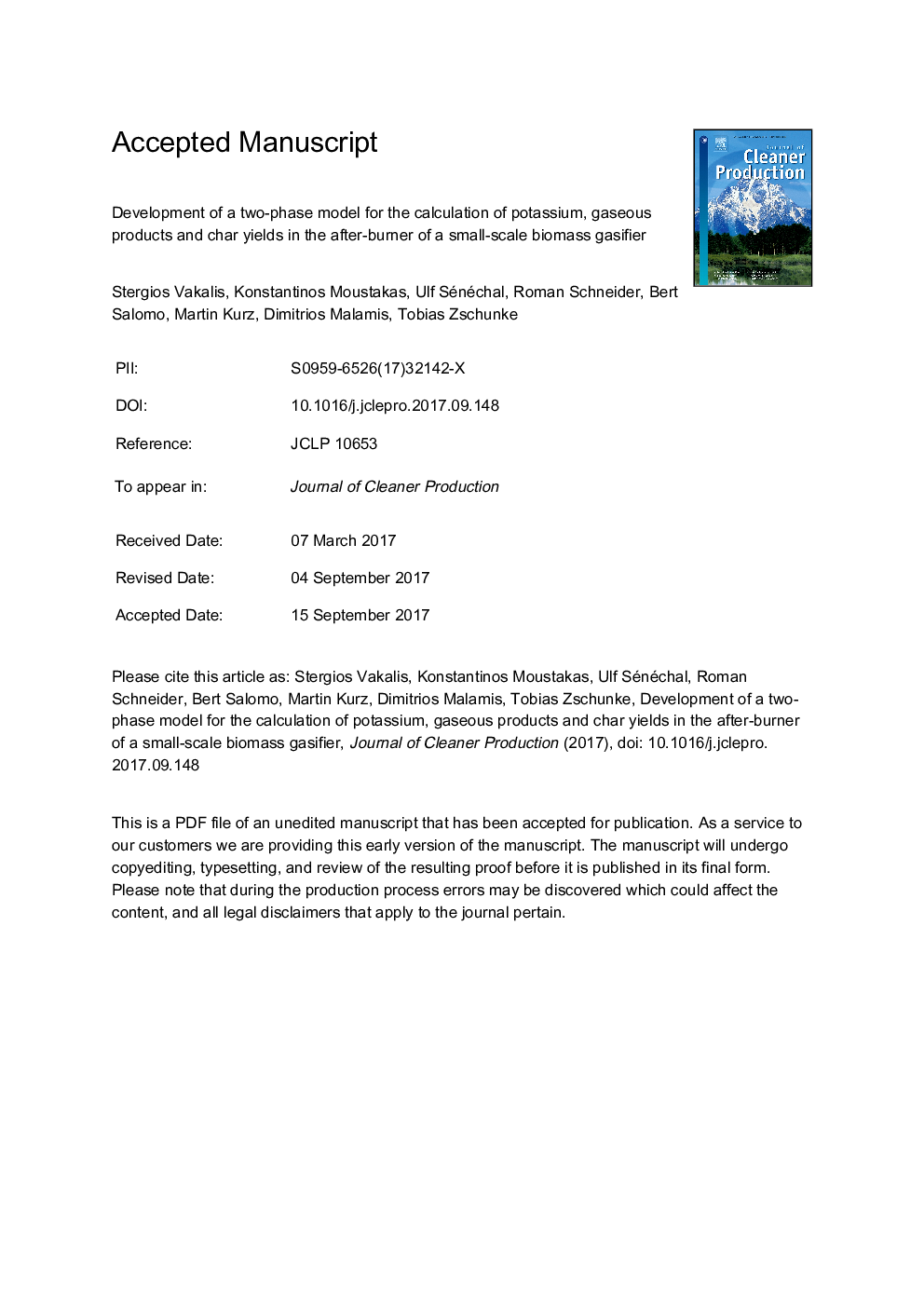| Article ID | Journal | Published Year | Pages | File Type |
|---|---|---|---|---|
| 5479196 | Journal of Cleaner Production | 2018 | 23 Pages |
Abstract
In small scale biomass gasifiers, 2-5% of the input by mass is converted into char which is a carbonaceous product with a wide range of heavy metals composition that depend on the operating conditions of the gasifier and the biomass input. Char is usually treated as waste and is being disposed because the scale of operation is such that does not allow the economic viability of centralized char valorization facilities. The after-burner is a secondary reactor where the mass of char is reduced by means of sub-stoichiometric reaction with air under high temperature and is utilized as an onsite management solution. Commercial software are able to model the equilibrium of metals but have not focused so far on the behavior of char or the final composition of gases. After-burners are air-tight units where measurements cannot be easily obtained. This study introduces a model that utilizes the concentration of potassium as a control variable in order to assess the temperature of the after-burner and then proceeds in calculating realistic yields of char, carbon oxides and the reactive air. The model was validated with experimental measurements of an after-burner and it successfully correlated the operating conditions with verifiable char yields. The results show that the model can be applied for the design and optimization of after-burners where the scope is the simultaneous minimization of the char yields and the heavy metals concentrations in the solid phase.
Related Topics
Physical Sciences and Engineering
Energy
Renewable Energy, Sustainability and the Environment
Authors
Stergios Vakalis, Konstantinos Moustakas, Ulf Sénéchal, Roman Schneider, Bert Salomo, Martin Kurz, Dimitrios Malamis, Tobias Zschunke,
